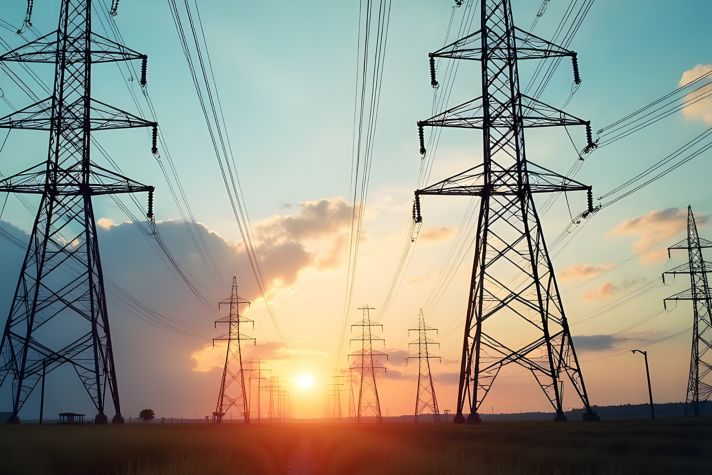What you will learn in this article:
- Insight into the pressing need for energy storage solutions due to modern grid strains and peak demand costs
- How tailored energy storage strategies can optimize energy flow, reduce costs and enhance resilience.
- Knowledge about various energy storage options and their benefits.
The energy grid is under strain. The traditional grid enabled everything from the first lightbulbs to the digital age, but it simply wasn’t designed for today’s demands: incorporating renewable energy sources, charging electric vehicles, managing cybersecurity threats or keeping up with weather extremes.
As electricity demand is hitting its highest point in two decades,1 it’s also increasingly costly. Thirty to 70% of an organization’s utility expenditure occurs during expensive peak demand periods.2
Future-focused businesses realize they need to be less reliant on the grid, and many are turning to energy storage systems, which allow for more consistent energy flow and cost.
An optimized energy storage solution depends on the specific energy needs and setup of an organization. Physical space, region of operation and intended use all come into play, and a combination of solutions often makes the most sense. With no one-size-fits-all answer, it’s important to work with an energy storage solutions partner capable of designing a system tailored to organizational objectives.
A solutions provider with a depth of knowledge and breadth of technologies will also understand how to strategically layer solutions — a practice known as stacking — which helps organizations get the most from their energy storage approach.
Honeywell works with organizations to design energy storage strategies that help improve resilience, manage energy expenses and contribute to the bottom line.
Understanding energy storage options
With so many energy storage solutions available, it’s important to approach project design with strategic outcomes in mind. That way, organizations can work with an energy solutions partner from the beginning to identify the right solutions stack that maximizes value, optimizes resilience and, in some cases, even opens new revenue streams. Energy storage solutions include:
Battery Energy Storage System (BESS)
These systems act as rechargeable batteries and can store energy from multiple sources, including the grid, solar panels and wind turbines. BESS provides backup power during peak demand or grid outages and can help reduce energy costs and carbon footprint. Excess energy can also be sold back to the grid.
To help reduce peak electricity costs for Saturn Power, a leading renewable energy provider in Canada, Honeywell developed a multiple megawatt-hour BESS solution that allows Saturn to charge batteries during off-peak times and draw from them when energy demand spikes.
Long-Duration Energy Storage (LDES)
LDES technologies store energy for extended periods of time. LDES can be used to store energy produced by renewables on high-generation days, making it available at low-generation times. LDES storage options include lithium-ion batteries as well as flow batteries, which are more suitable for extreme climate environments.
Microgrids
Microgrids are local electrical grids that can independently provide power to companies, communities and campuses. Microgrids require Energy Management Systems (EMS) to help balance energy generation and storage sources. Although microgrids can be connected to the larger grid, they can operate during outages as an “island” to create continuity of energy supply. Microgrids can be good choices for remote or off-grid locations.
Honeywell successfully implemented a microgrid solution at the Honeywell Life Safety plant in Lugoj, Romania, which had been plagued with frequent power disruptions and rising electricity costs. The on-site microgrid, consisting of solar photovoltaics, BESS and diesel generators, now meets the everyday demands of the facility, while serving as a reliable backup during blackouts.
Distributed Energy Resources (DERs)
DERs commonly include multiple, small-scale power generation sources, such as solar panels, wind turbines and battery systems. DERs allow for energy to be stored close to where it’s needed for a more resilient and adaptable energy system. DERs can help control energy costs and can even play a role in stabilizing the grid.
Virtual Power Plants (VPPs)
VPPs bring together the capacities of different types of DERs, so they can operate as a unified, flexible resource. In a VPP, organizations with DERs pool their energy yields to participate in wholesale electricity markets. A central authority, such as a large utility company, manages the group. Members may enjoy incentives for participating and can earn revenue from their energy assets. Utility companies benefit by using aggregated energy sources to help stabilize the grid, especially during periods of peak demand.
Supporting energy storage success
Energy storage presents tremendous options and opportunities. The right energy storage solutions provider looks beyond protecting uptime in the event of an outage and takes a long view of how energy storage can contribute to wider business goals, from meeting ESG benchmarks to reducing expenses to creating a new revenue stream.
Honeywell provides a broad range of offerings and a deep understanding of how energy storage systems can work together to help organizations achieve greater value.
1 International Energy Agency, “Global Electricity Demands Set to Rise Strongly This Year and Next, Reflecting Its Expanding Role in Energy Systems Around the World,” July 2024.
https://www.iea.org/news/global-electricity-demand-set-to-rise-strongly-this-year-and-next-reflecting-its-expanding-role-in-energy-systems-around-the-world
2 National Renewable Energy Laboratory, “An Introduction to Demand Charges,” August 2017.
https://www.cleanegroup.org/wp-content/uploads/Demand-Charge-Fact-Sheet.pdf




